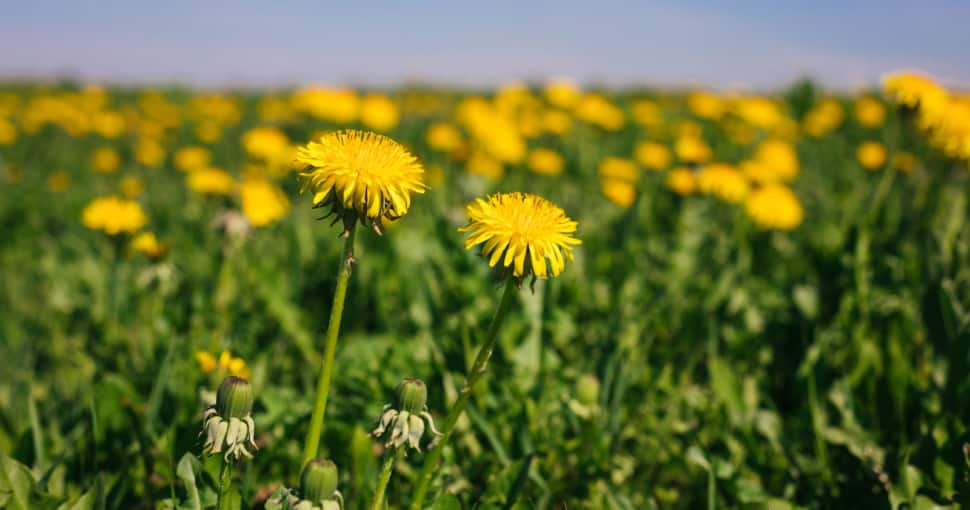Common dandelions (Taraxacum officinale) grow like weeds all over the world. Their happy little yellow flowers are a favorite for bees and other pollinators, and they disperse their seeds by growing fluffy, round seed heads. They got their name because their dark green leaves resemble lions’ teeth. However, do not confuse Dandelions with these lookalikes.
Contents
Dandelions are so prolific because they have evolved to reproduce incredibly efficiently. Many other plant species look very similar to dandelions because they have developed the same traits over time. This is why dandelions are often confused for other species, like:
- Sow thistle – yellow daisy flowers like dandelion, with several flowers per shoot
- Hawksbeard – almost identical yellow flowers, but with multiple flower heads
- Coltsfoot – flowers closely resemble dandelions, but the leaves grow after the plant flowers
- Hawkweed – similar yellow daisy flowers, but with more than one flower per shoot
- Flatweed – often called a false dandelion due to its resemblance
- Mountain dandelion – similar yellow flowers that develop into fluffy seed heads
- Autumn hawkbit – also known as the fall dandelion, due to their striking resemblance
1. Sow Thistle – Sonchus spp.
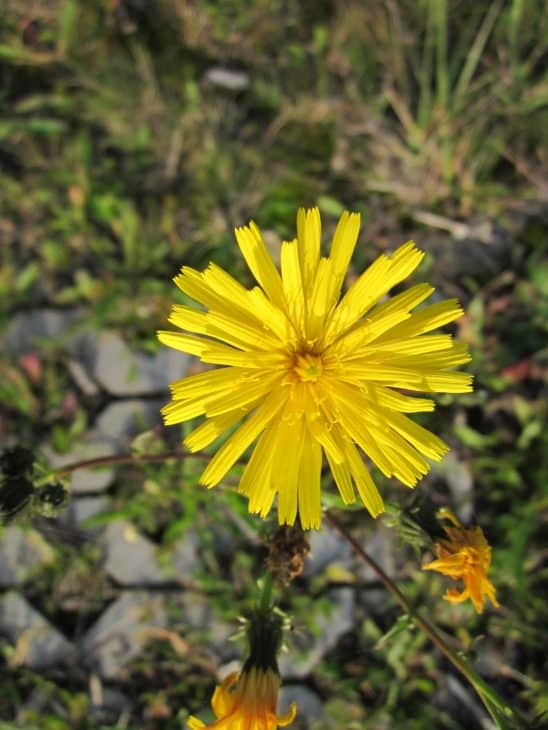
Like dandelions, sow thistles belong to the Asteraceae family. The flowers look like little yellow daisies – almost exactly like dandelion flowers. In fact, sow thistle is often confused with dandelion because both species are common lawn weeds.
The resemblance does not end with the flowers. When you break sow thistle or dandelion leaves and stems, they secrete a sticky, milky, white sap. This is what gives sow thistle its other common name, milk thistle.
Dandelion leaves look very similar to sow thistle. Sow thistle leaves are slightly deeper cut, so they appear more lobed than dandelion leaves. Both species have edible leaves.
Sow thistle flowers open during the day and close at night. Sow thistles have a number of flowers on each flowering shoot, compared to dandelions which have a single flower per shoot.
Once the flowers have been pollinated, sow thistle produces fluffy, round seed heads. They look exactly like dandelions but smaller.
2. Hawksbeard – Crepis spp.
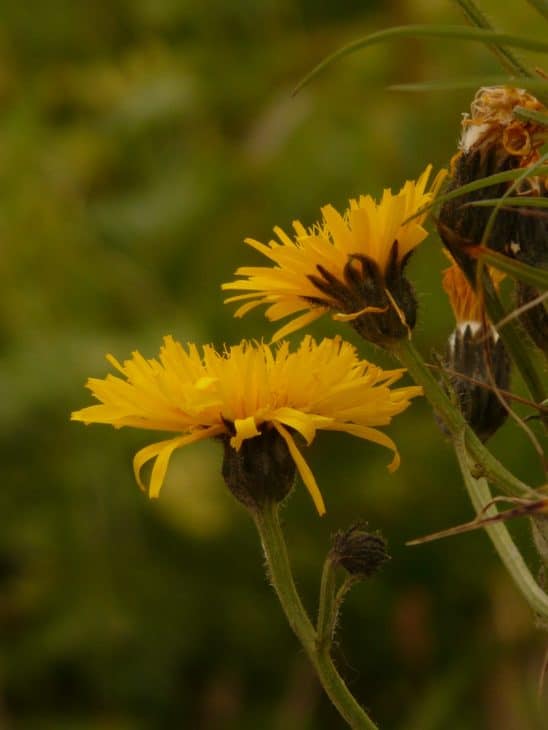
Hawksbeard is an annual weed that looks almost identical to dandelion and sow thistle. A member of the Asteraceae family, it has typical daisy flowers that are the same bright yellow as dandelion blooms. Hawksbeard is near impossible to distinguish from dandelion before it flowers.
The leaves are relatively hairless and grow flat against the ground. The shape of the leaves is very similar to dandelion leaves. The only difference is that the lobes of dandelion leaves point downward, and in hawksbeard leaves, the lobes point outwards, perpendicular to the stem.
Like dandelion, hawksbeard leaves and stems secrete a milky sap, called latex, when torn. Hawksbeard flowers grow on branched flowering shoots, and there are a few flowers per shoot. Dandelion flowers, on the other hand, have only one flower per shoot.
3. Coltsfoot – Tussilago farfara
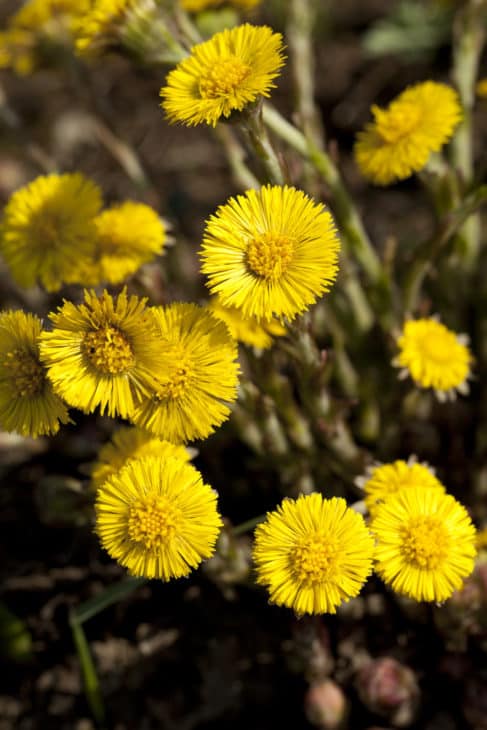
From a distance, coltsfoot looks very similar to dandelion. Look closer, and you will realize these plants are relatively easy to tell apart.
The small, bright yellow daisy flowers are what bear the strongest resemblance with dandelion. Unless you hold a dandelion and a coltsfoot flower next to one another, it is hard to tell the difference. Dandelion flowers are more rounded on top, whereas coltsfoot flowers are more open and cup-shaped.
Coltsfoot blooms very early in the spring. The flowers appear before the leaves (compared to dandelions that grow leaves first, then flower). The stems appear scaley, unlike dandelion stems which are smooth.
4. Hawkweed – Hieracium spp.
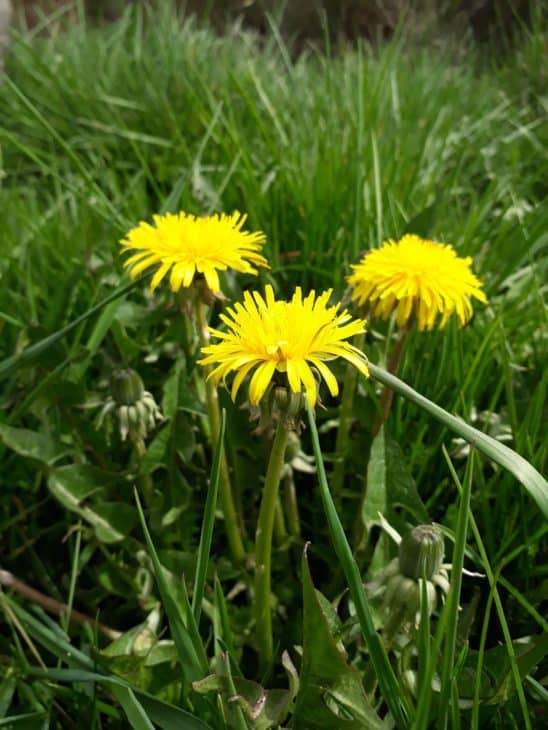
Hawkweed is very closely related to dandelion, and you can tell this by their striking resemblance. They have bright yellow daisy flowers with a tinge of orange-red around the edges. The flower buds and bracts have fine black hairs. Multiple flowers grow on branched stems.
Like dandelions, the leaves and stems secrete a milky latex when torn. The leaves are quite different to dandelion leaves. They are not lobed or toothed, and they are covered in fine hairs.
Hawkweed grows in many of the same areas as dandelion – roadsides, pastures, lawns, and areas where the ground has been disturbed. They are just as invasive as dandelions and are considered agricultural pests.
5. Flatweed – Hypochaeris radicata
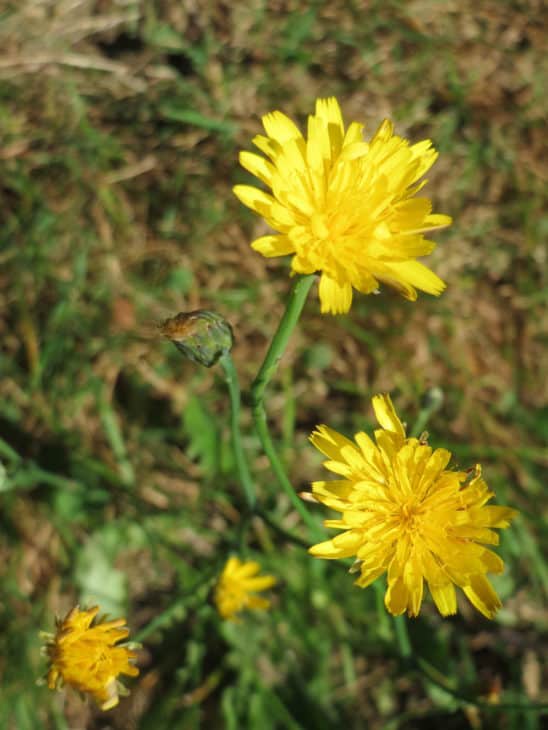
Another dandelion look-alike is flatweed, or false dandelion. They have bright yellow dandelion-like flowers, which, once pollinated, develop into fluffy, round seed heads. Unlike dandelions, the flowering shoots are branched and carry multiple flowers.
Flatweed leaves look almost exactly like dandelion leaves, and the plant has the same growth form. Their leaves are irregularly shaped, with toothy lobes. Unlike dandelions, the leaves are covered in coarse hairs.
If you pull flatweed out, you will see it has the same type of taproot as a dandelion. Flatweed roots are edible and can even be made into a coffee substitute. They are roasted and ground into a caffeine-free alternative.
6. Mountain Dandelion – Agoseris glauca
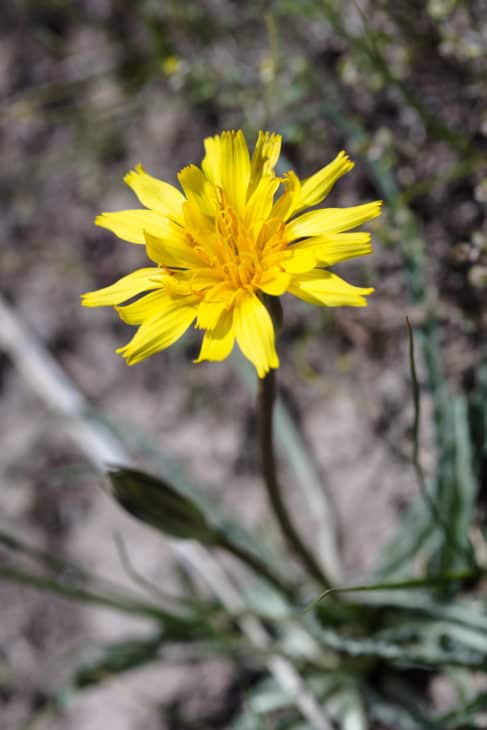
Mountain dandelion, as its name suggests, looks a lot like dandelion but is an entirely different species. They are closely related to dandelions and are members of the Asteraceae family. They have bright yellow daisy flowers that look almost identical to dandelion flowers. There is a single flower per shoot.
The main difference is that mountain dandelion produces a fruit rather than a fluffy seed head. The fruits are very small and contain seeds.
The leaves are quite variable in their shape. They are not lobed, like dandelions, but are more sword-shaped. When broken, the leaves excrete a milky latex, just like dandelion.
Mountain dandelion is not a cosmopolitan species, like dandelion. They are native to North America, occurring mainly in the northwestern and western US. They are considered wildflowers rather than weeds.
7. Autumn Hawkbit – Scorzoneroides autumnalis
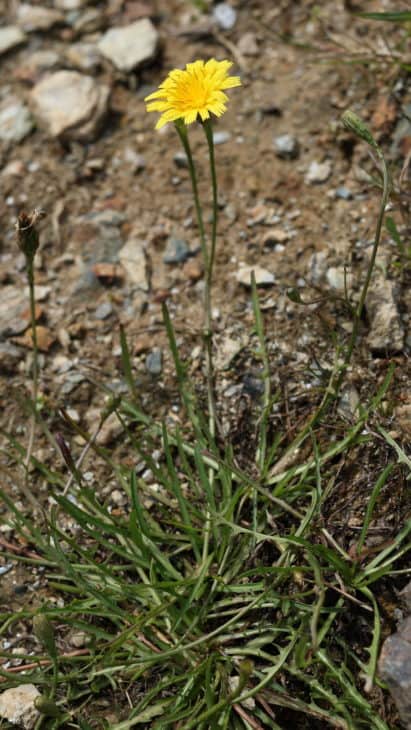
Autumn hawkbit is a weed that looks almost exactly like dandelion, hawksbeard, and flatweed. It has bright yellow daisy flowers that grow singly on multiple flowering shoots. The flowering shoots are wirier compared to the fleshy, hollow shoots of dandelion.
Unlike dandelion, Autumn hawkbit has hairy leaves. The leaves are much smaller than dandelions, but they have the same toothed edges. Once the flowers have been pollinated, fluffy, white seed heads form and seeds are dispersed by the wind.
Autumn hawkbit is considered an agricultural pest because it is so invasive. It likes to grow in relatively poor soils that have been disturbed.

